Start your zen doodling journey with simple circles, squares, and triangles as your foundation. Create a peaceful space with soft lighting, calming music, and essential oils to set the mood. When drawing, sync your breath with slow, deliberate pen strokes to transform each line into a mindful ritual. Let your patterns flow organically without forcing specific outcomes – this releases creative pressure. Most importantly, embrace imperfections in your designs rather than seeking perfection, as mistakes often lead to unexpected beauty. These mindful drawing techniques offer a natural pathway to calm your anxious mind and discover deeper peace within.
Start With Basic Shapes
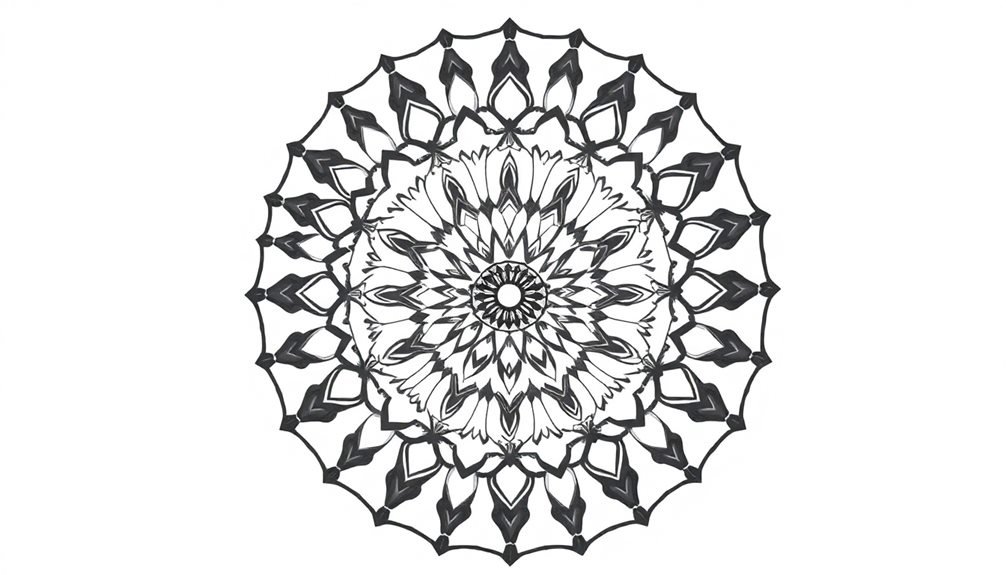
When beginning your zen doodling journey, simple shapes form the foundation of every pattern. Start by drawing circles, squares, and triangles in varying sizes across your paper. These elementary shapes serve as anchors for more complex designs and help train your hand to create steady, confident lines.
Don't worry about making perfect shapes – the slight imperfections add character to your work and reinforce the mindful, relaxing nature of zen doodling. Try combining basic shapes to create new patterns: overlap circles to form flower petals, stack squares to build geometric structures, or arrange triangles in a mandala-like formation.
As you draw, focus on the sensation of your pen moving across the paper and the repetitive motion of creating each shape. You'll notice your breathing naturally slows down as you concentrate on these simple forms.
Keep your shapes loose and flowing rather than rigid and precise. Remember to vary the pressure of your pen to create different line weights, adding depth and visual interest to even the most basic designs. This foundation in simple shapes will give you the confidence to explore more intricate patterns.
Create Your Sacred Space
Now that you've mastered basic shapes, setting up the right environment will enhance your zen doodling practice. Choose a quiet corner of your home where you won't be interrupted, and make it your dedicated doodling sanctuary. Clear the space of clutter and unnecessary distractions, including your phone and other electronic devices.
Consider adding elements that engage your senses and promote relaxation. Light a scented candle with calming fragrances like lavender or vanilla, play soft instrumental music, or use a white noise machine to mask disruptive sounds.
Make sure you've got proper lighting – natural light is ideal, but a warm desk lamp works well too. Set up your drawing supplies within easy reach. You'll want a comfortable chair and a stable surface for drawing.
Keep a variety of pens, paper types, and any other materials you enjoy using nearby. Don't forget to have a glass of water handy – staying hydrated helps maintain focus.
Add personal touches that make the space feel special to you, whether it's inspiring artwork, meaningful objects, or plants that bring life to your creative corner.
Practice Mindful Line Making
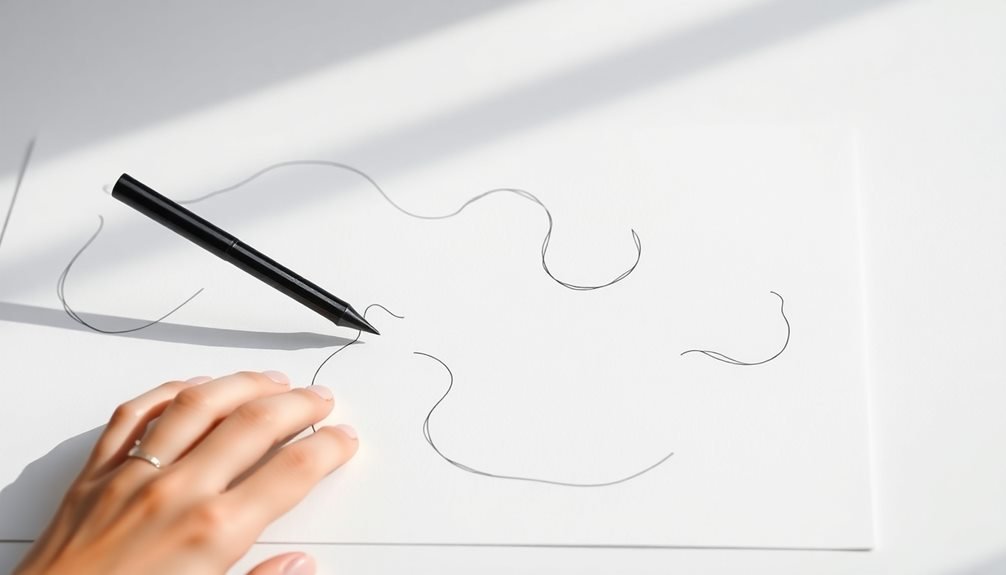
At the heart of zen doodling lies the practice of mindful line making. This meditative approach transforms simple strokes into a calming ritual that helps quiet your racing thoughts. As you draw each line, focus on the sensation of your pen touching the paper and watch the ink flow across the surface.
Start with basic shapes like circles, curves, or straight lines. Don't rush – draw each line slowly and deliberately, paying attention to the pressure you're applying. You'll notice how your breath naturally syncs with your movements, creating a rhythm that grounds you in the present moment.
When you're feeling anxious, try drawing parallel lines across your page. Notice how each line relates to the ones before it, creating a gentle sense of order and control.
You can also experiment with different line weights by varying your pressure – lighter strokes for moments when you need gentleness, and bolder ones when you want to feel more grounded.
Let Patterns Flow Naturally
The natural rhythm of zen doodling emerges when you let go of perfectionism and allow patterns to develop on their own. Instead of planning every detail, trust your intuition to guide your hand across the paper. You'll notice that patterns begin to flow more freely when you release expectations and embrace spontaneity.
Start with a simple shape or line, then let each subsequent mark build naturally from the previous one. Don't overthink your next move – if circles feel right, draw circles. If straight lines call to you, follow that impulse. Your patterns might transform from geometric shapes into organic swirls, or from random dots into structured grids.
When you feel stuck, pause and observe the patterns you've already created. Look for natural continuation points where new elements could emerge. Remember, there's no wrong way to develop your patterns – even perceived "mistakes" can lead to unique and beautiful designs.
If your doodle takes an unexpected direction, follow that path rather than forcing it back to your original vision. This acceptance of natural flow helps reduce anxiety by teaching you to release control and trust the process.
Release Perfectionist Tendencies
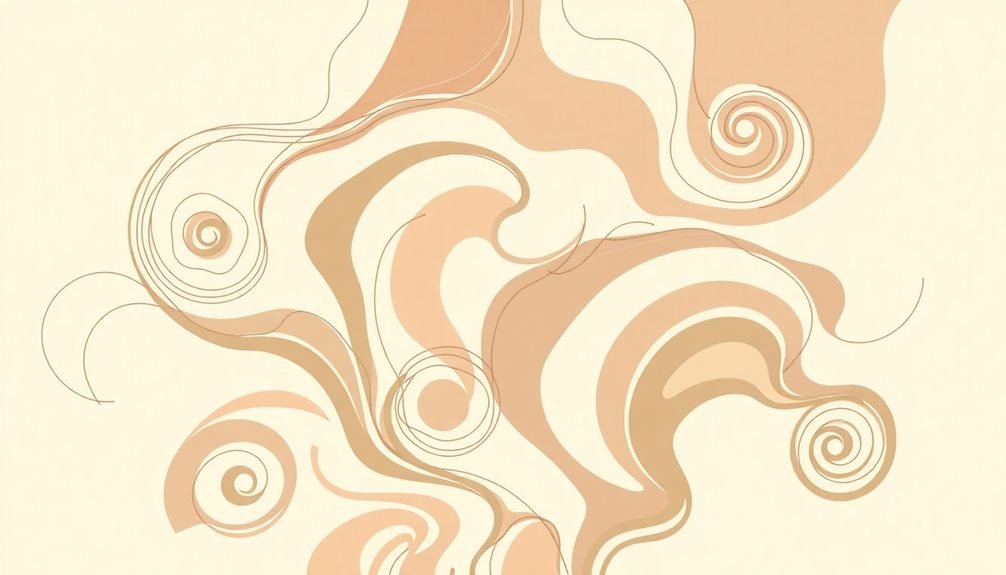
Perfectionism often sabotages the therapeutic benefits of zen doodling by creating unnecessary pressure and self-judgment. When you're focused on making every line perfect, you'll miss the meditative essence of the practice and increase your anxiety instead of reducing it.
To break free from perfectionist tendencies while zen doodling, embrace imperfection as part of the creative process. Your drawings don't need to be symmetrical, balanced, or even traditionally beautiful. They simply need to reflect your current state of mind and emotional expression.
| Perfectionist Habit | Freedom Practice |
|---|---|
| Erasing mistakes | Let mistakes become part of the design |
| Planning every stroke | Draw spontaneously without planning |
| Judging the outcome | Focus on the process, not the result |
Remember that zen doodling isn't about creating museum-worthy art. It's about finding peace in the present moment through mindful mark-making. If you notice your inner critic emerging, acknowledge the thought and gently redirect your focus to the soothing rhythm of your pen moving across the paper. You'll find that your most authentic and relaxing doodles emerge when you release the need for perfection.
Frequently Asked Questions
How Long Should Each Zen Doodling Session Last for Optimal Anxiety Relief?
You'll get the best anxiety relief with 15-30 minute doodling sessions, but don't feel restricted by time. Listen to your body and stop when you're feeling calmer or continue if you're in the flow.
Can Zen Doodling Be Combined With Other Meditation Practices?
You can effectively combine doodling with meditation practices like mindful breathing, guided visualization, or mantras. Try focusing on your breath while drawing, or use your doodles as anchors during your meditation sessions.
What Art Supplies Work Best for Beginners Starting Zen Doodling?
You'll only need basic supplies to start: a black fine-liner pen, smooth white paper, and a pencil. Don't worry about fancy tools – simple materials let you focus on the relaxing, creative process.
Is Zen Doodling Effective for Managing Panic Attacks in Public Settings?
You can use zen doodling during public panic attacks – it's portable and discreet. Keep a small notepad handy and focus on simple patterns. It'll help ground you and redirect anxious energy.
Does Listening to Music Enhance or Interfere With Zen Doodling Benefits?
You can listen to calming music while doodling – it won't interfere if it's soothing and instrumental. In fact, combining music with your doodling practice can deepen relaxation and enhance your mindful state.
In Summary
You'll find zen doodling offers a gentle path to managing anxiety through simple artistic expression. As you practice these five techniques – from basic shapes to mindful line work – you're creating more than just drawings; you're developing a calming ritual. Don't worry about achieving perfection – let your creativity flow naturally. When anxiety strikes, pick up your pen and allow these meditative patterns to guide you toward peace.

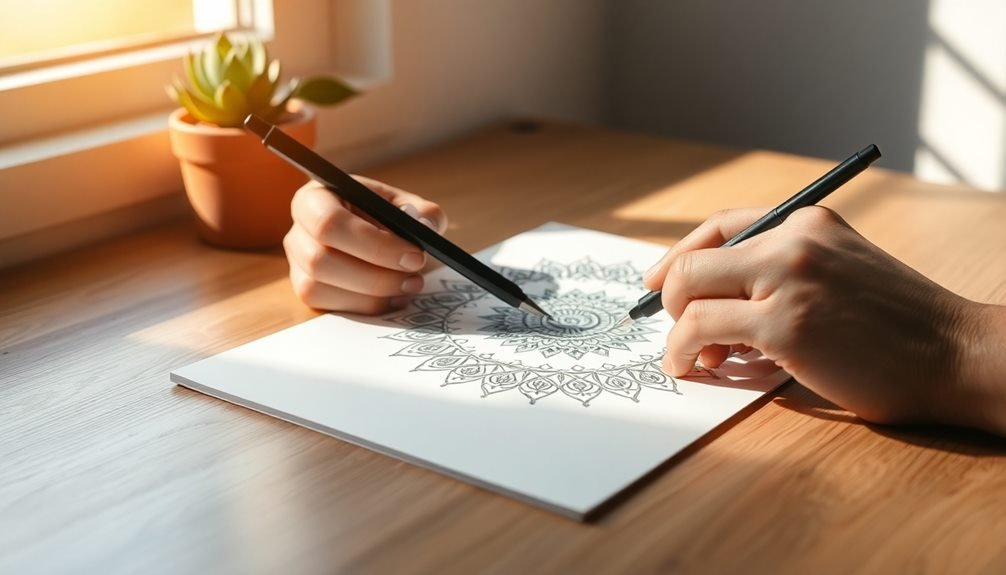
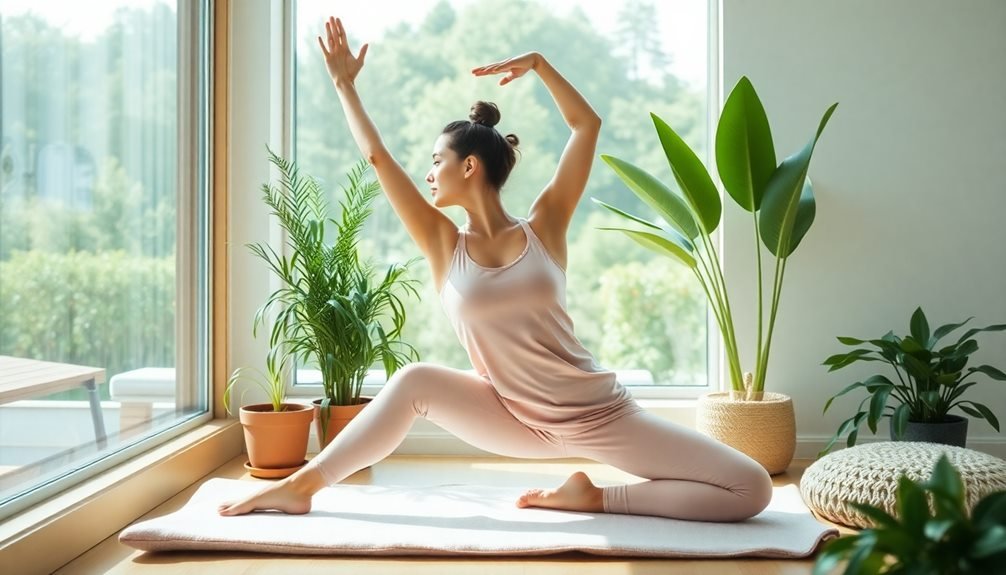
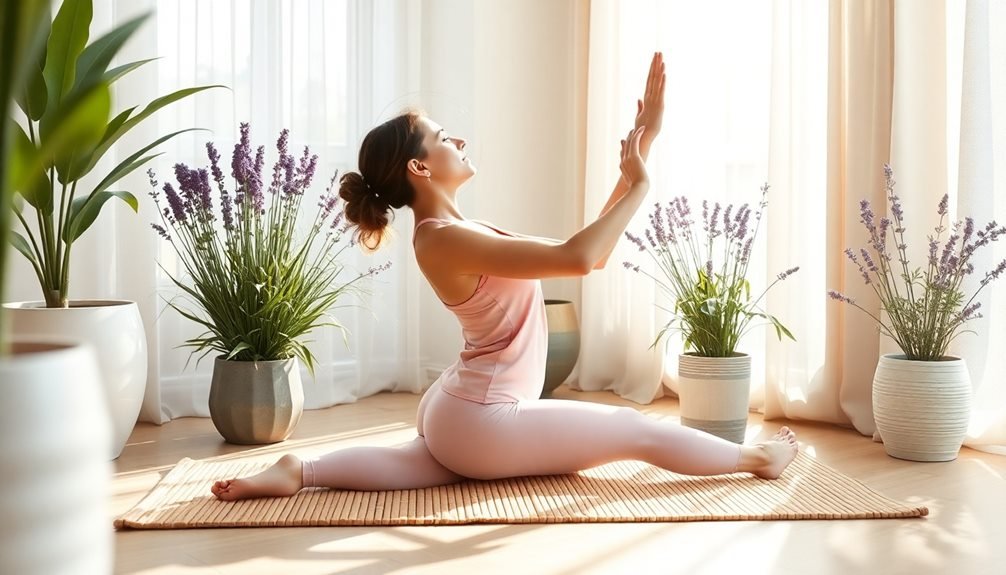
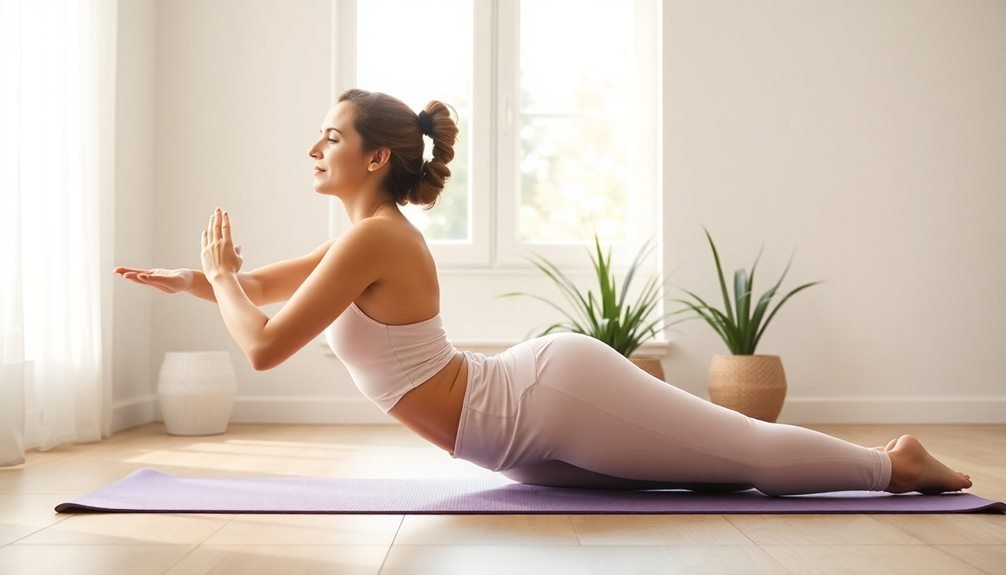
Leave a Reply